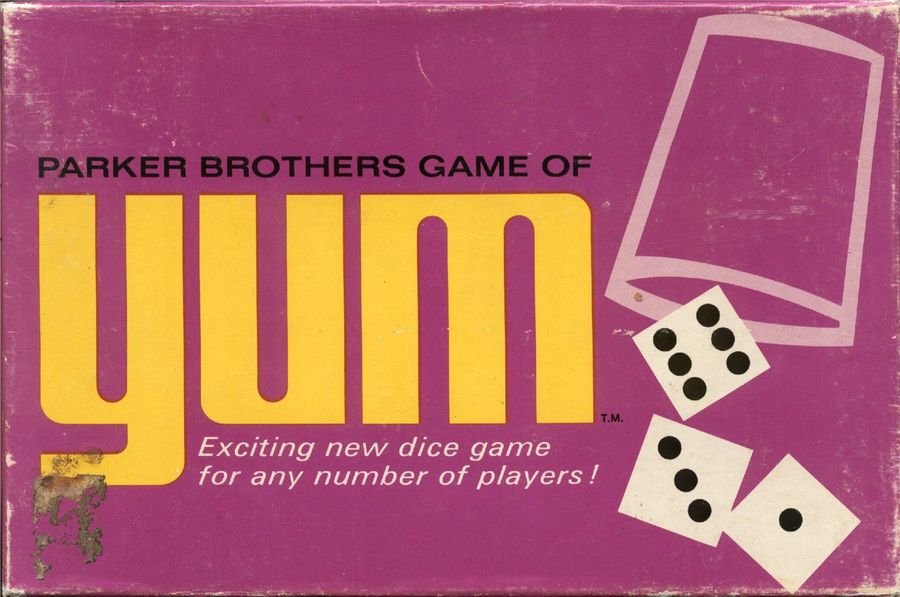Yum (1959) Board Game
Yum is a classic dice game that was first released in in 1959. Designed by Harvey Grinsell, this game has been enjoyed by families and friends for generations. With its simple rules and quick gameplay, Yum is a perfect choice for game nights or gatherings.
Game Components of Yum
How To Setup Yum
To set up Yum, each player receives a score sheet. The objective is to score the highest number of points, so the score sheet is crucial for tracking progress. Players take turns rolling the dice, aiming to form specific combinations.
Gameplay Mechanics and Game Objective
– Roll the dice up to three times per turn.
– Form combinations such as:
Player Experience
Yum offers a mix of luck and strategy, making it engaging for players who enjoy dice games. Each turn requires strategic thinking to maximize the score, especially when deciding how to use the rolled numbers. The game is relatively simple to learn but challenging to master, making it accessible to a wide range of players.
Pros
Cons
Personal Thoughts on Yum
Yum is ideal for those who enjoy lightweight, easy-to-play dice games with a touch of strategy. It’s a great choice for family game nights or casual gatherings, as it’s quick to learn and can be played in a relatively short amount of time. However, players seeking more complex or deeply strategic games might find Yum a bit too simplistic.
We are supported by our audience. When you purchase through links on our site, we may earn an affiliate commission, at no extra cost for you. Learn more.

